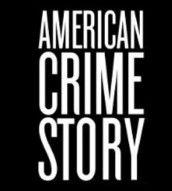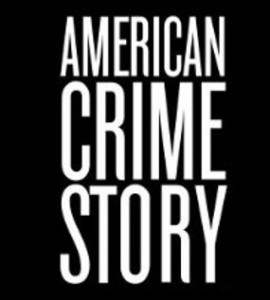FX’s Wednesday-night second installment of the AMERICAN CRIME STORY anthology drama series, THE ASSASSINATION OF GIANNI VERSACE, deals not only with the well-known event of the title, but of the murder spree that led up to it. Andrew Cunanan, played in the miniseries by Darren Criss, killed at least four other men – Jeffrey Trail, David Madson, Lee Miglin and William Reese – before attacking Versace, who is portrayed by Edgar Ramirez. Based in part on Maureen Orth’s nonfiction book VULGAR FAVORS, AMERICAN CRIME STORY argues that law enforcement was slow to track Cunanan due to the homophobia of the times.
AMERICAN CRIME STORY comes from executive producers Ryan Murphy (who also directed a number of episodes), Brad Falchuk, Alexis Martin Woodall, Nina Jacobson and Brad Simpson. Rather than have a writers’ room for THE ASSASSINATION OF GIANNI VERSACE, the executive producers opted to have a single writer for all ten episodes, Tom Rob Smith.
Smith, an Englishman who is also an executive producer on this season of AMERICAN CRIME STORY, created and wrote LONDON SPY and CHILD 44. He talks about his research for the project, and what struck him most in what he found.
ASSIGNMENT X: When the producers came to you, did they say, “We’d like you to write all ten episodes?”
TOM ROB SMITH: No. It just evolved from the fact that we were in a room, and it was Brad, Ryan, Nina and myself, and the book just needed a very particular approach. It wasn’t that we sat down and said we were going to tell the story backwards [as the series does, to an extent]. We didn’t have that concept. It was, we were trying to figure out how to do it organically. The thing with a [writers’] room is, if you have a big room, you have to make those decisions and then send everyone off to write their episodes. And we would move forward a fragment, and then decide to change direction. You’re much more nimble if you’re on your own. I think it just happened like that.
AX: How was it decided that this season of AMERICAN CRIME STORY would be ten episodes, as opposed to twelve or eight or whatever?
SMITH: That was again all decided by the story. We look at them and think, “What is the right number?” They’re like books in a weird way. You’re like, “What are the parts that we have?” No one says, “We want ten episodes,” or “We want twelve episodes.” They say, “What is your story?” And you look at it, and think, “This is how much we have. These are the great episodes.” The quality control on this is so high, they would never stretch it to fill a quota. It was always about, each episode has to feel really satisfying in its own right, almost like a story in its own right. So that’s where it comes from.
AX: How aware were you of the murders at the time they occurred in 1997?
SMITH: I was very aware of the Miami murder, but I knew nothing about the build-up. And I think that’s one of the things, that we take that thing that everyone knows, which is the perception of Miami, and we’re unpacking it, so we’re literally pulling those pieces apart. And that to me was a discovery, too. I went on a journey in a sense that viewers kind of go on, which is, I knew the thing on Miami, and now let’s see what was behind it all.
AX: Cunanan’s murder spree stretched across the U.S. What kind of research did you do in the different cities and states?
SMITH: The Minneapolis murders, we got all the police files. One of the big gaps was that, [author Orth] must have read the police files, but obviously, you’re getting her fragments. It’s always interesting to get your own, and the Minneapolis police files, they released them without any problem. I think they were like four hundred pages. I think we got a thousand pages on the FBI, I think we had four hundred from the Chicago [police]. So you have these volumes of information. We’ve got a great researcher on the project. We got all of that. In San Diego, these weren’t released by the San Diego police force, we had to the court records. So we got everything that was possible to get. Minneapolis is where the murders start, and they’re a key part of our story. When we say AMERICAN CRIME STORY, this is an American crime story in a geographic sense. We have L.A., we have San Francisco, we have San Diego, we have Minneapolis, we have Chicago, we have New York, we have New Jersey – all of these towns were part of this enormous story.
AX: How is it for you setting a story in the U.S.? You’re British and your other projects have been set in England and Europe. Was there anything you sort of had to absorb about Americans?
SMITH: I don’t know. I just think, we were telling an American crime story for sure, but I think one of the reasons [the first season of AMERICAN CRIME STORY, THE PEOPLE V. O.J. SIMPSON] was so successful is, it spoke to everyone around the world. You go for those universal truths. I do think, pushing all of the universal truths to the side, the minutiae is very important, like going to San Diego and going to Andrew Cunanan’s house, seeing where he grew up. Sometimes those things can be overstated, because they didn’t give you an episode, for example. You don’t get an episode from it. But Andrew Cunanan was very sensitive to class and status. And I was like, well, I get that as an idea. And I went to his house, which was in La Bonita, and it’s a nice house. His parents did well to pull him up out of relative poverty in National City. But even on the street he’s on, which has a slight incline, he was on the bottom of that street, and it went on to kind of a wasteland. And as the houses went up the hill, they got steadily more expensive. And I was like, “Even in this one street, there’s this microcosm of the haves and the have-nots.” He went to La Bonita High briefly, and I went there, and it’s a regular high school, and then he was sent to Bishop’s in La Jolla, and I was like, “This is a world apart.” You turn up and it’s this beautiful courtyard with these whitewashed walls. He was taken from this household that was modest, and given everything. And just when you go into the detail and you see it for real, those things really start to speak to you about the character.
AX: Obviously, there’s a lot of visual oomph in Gianni Versace’s world. Was it easier or harder for you to write with knowing that, “Okay, people are going to be taking in the surroundings,” so you need to give them a moment to look at that before you start the drama?
SMITH: Oh, no. I see it all as one. I see the locations and the clothes, all that detail is storytelling. That opening is the contrasting of these two worlds, this world that someone had created that was down to the ashtray, down to the silk robe, down to the slippers. [Versace] built all of that. He built his own homeware, and so that sense of, look at what he’s created, [and then at Cunanan, who is] someone who was literally down to nothing on a beach, who had this terrible abscess on his leg, he had physically broken apart, and who was in shorts he’d probably been wearing for weeks and weeks, and was in this sweaty t-shirt, and this sense of, look at the contrast between these two men. So I always saw the visuals as being a real storytelling engine and not some kind of secondary thing.
The Versace home is – it’s weird going there, because now it’s a hotel, and I felt this energy of, he’s missing from this space. You really feel it. You feel like, this isn’t just a nice house, this was his. This needs him on some level. I could really feel an absence.
AX: What is it like writing someone like Versace who, in a sense, creates his own world?
SMITH: What I found so inspirational about him, and one of the things was, he’d turn up to Milan, this guy from the south of Italy who was looked down on by the [design establishment], and now he’s such a grand figure that we forget that he was this person who was told “no” by everyone. And even different fabrics – he would refuse to accept “no,” he would say, “I’m going to [use] this fabric.” And I found that refusal to accept the constraints and confines that were presented to him very inspirational. That was a key part. I found that he inspired me as I wrote, if that makes sense. I was like, “This man is amazing.”
AX: Do you have any other projects we should know about?
SMITH: I’m doing a show for BBC2, MOTHER, FATHER, SON.
AX: And what would you most like people to know about THE ASSASSINATION OF GIANNI VERSACE: AMERICAN CRIME STORY?
SMITH: I’m fascinated by crime stories, because I think they’re about society. I feel like they soak up something about society, tell a bigger story. And this really does. It tells a story about America at that time and about identities, aspirations, it’s emotional. But I also think this was the largest failed FBI manhunt of all time in Miami. This has enormous scale. And how this kid in La Bonita ends up causing the pandemonium to tip over Miami to me is a very interesting story to tell.
This interview was conducted during FX’s portion of the Television Critics Association (TCA) press tour.
Follow us on Twitter at ASSIGNMENT X
Like us on Facebook at ASSIGNMENT X
Article Source: Assignment X
Article: Exclusive Interview: Writer Tom Rob Smith chats about Season 2 of AMERICAN CRIME STORY: THE ASSASSINATION OF GIANNI VERSACE
Related Posts:












